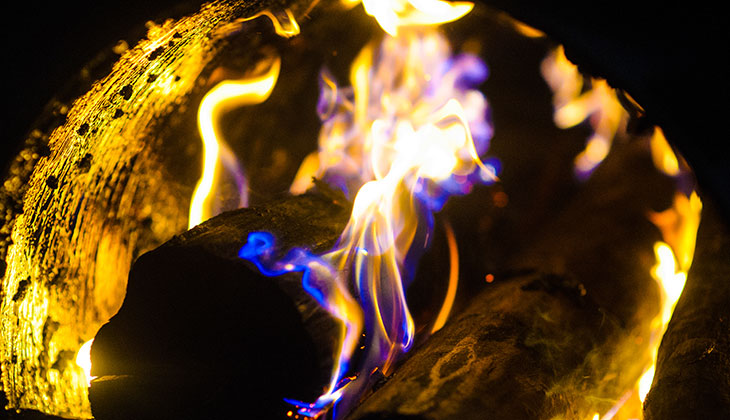Solid fuel stove safety on boats
Chris Hogan, 13th July 2015, Boat
Solid fuels stoves are popular on narrowboats and other craft on inland waterways. They are getting more popular as an increasing number of people look to living year-round afloat as an alternative to high property prices. Stoves can heat a boat up quickly and be controlled easily if they are well maintained.

There are obvious dangers – you're basically carrying a fire along with you – but also some that aren't so well-known. The Boat Safety Scheme (BSS), run by the Canal & River Trust and the Environment Agency, has produced comprehensive advice on stoves.
According to the BSS at least two dozen boaters were hurt and five killed using solid fuel stoves in the first decade of the 21st century. The advice on their website (link at the end of this article) is based on what's been learned from those sad incidents.
Over-firing
The organisation identifies four main causes of fire, the first being the most obvious – fire – but specifically from 'over-firing'. This causes many boat fires and happens when fire races out of control. Flue gasses gain heat and speed as they go up the chimney; in the end the stove glows red hot and fire breaks out either in the flue or when materials around the stove ignite.
To prevent this, get to know the way your stove reacts with different fuels, avoid bituminous coal and don't overload the stove and leave it unattended. Over-firing can happen more under windy conditions as more air is drawn through the flue, so in those conditions feed little and often.
There's a lot more on the BSS site about both prevention and how to deal with over-firing which is well worth reading.
Carbon monoxide (CO) poisoning
Awareness of the dangers of the 'silent killer', as it's being called, is growing and we've run articles about it before. It's odourless and colourless, affects people at low doses and, because it causes people to become unconscious first, it's rare that victims realise anything is wrong and are able to raise the alarm.
Poor ventilation is usually the cause; the fire can't burn properly so flames will appear lazy and weak and there'll be a strong smell of smoke. Using the wrong fuel or wet fuel can also cause problems – wood should be dry and well-seasoned. If you have a recent installation, check against BS8511 to make sure your stove has an adequate air supply.
One warning sign is feeling ill on your boat – headaches, mood swings, feeling sick, dizzy, tired or confused, stomach pains or being sick – yet you feel fine when you're ashore. If this happens seek medical attention quickly.
A better warning will be provided by CO detector – well worth investing in even if you don't have a solid fuel stove.
Keeping things too close to the stove
Somewhat surprisingly this still causes many onboard fires, often in conjunction with over-firing. Apart from the obvious, like not hanging pictures or blinds directly above the stove, you need to be careful of soft furnishings that can move in a breeze, like curtains.
But the BSS highlights another problem that's not so well known – 'pyrolysis' – which is a slow chemical reaction similar to fire but without flames, at least initially. It can occur in wood, where the scorched wood looks like the aftermath of a fire but in fact it's still active.
The chemical reaction dries the wood out and turns it into a sort of charcoal, and this can happen in battens that aren't visible. Pyrolysis doesn't need a flame or extreme heat but as soon as enough oxygen reaches it, it will ignite.
Look out for unexplained hot spots or wisps of smoke from unusual areas. If necessary remove covering materials to check that this isn't happening out of sight.
Poor maintenance and misuse
This fourth cause is one of the more obvious ones, surely it should go without saying that not looking after a stove might cause fires? But apparently not and the BSS highlights four principles to keep in mind:
- Can you improve the area around your stove, or the chimney, or does the stove need renewing? If so, plan how to take the next opportunity to make the necessary changes – don't put it off.
- Keep an eye on the stove and chimney for the earliest signs of trouble, and don't delay in taking action.
- Take care operating your stove. Make sure you read the instructions and follow them closely. If you don't have the instructions, these days you might well find that they can be downloaded from the internet.
- Make and take the time to maintain the stove according to the manufacturers instructions.
Stay safe
We're in the insurance business and we can provide compensation for things that are lost, broken or stolen. But nothing can reverse serious injury or death so please do take care with solid fuel stoves.